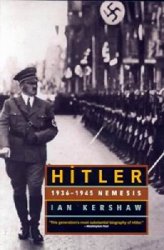America’s COLD WAR against COMMUNISM led to its longest war, the controversial failure in Vietnam.
In 1945, war broke out when Vietnam declared independence from France, which had colonized the region since the mid-1800s. Battling nationalist forces, French troops continued to fight in Vietnam until 1954, when France’s domestic support for the war wavered after a devastating defeat at Dien Bien Phu. Plans to allow France a peaceful withdrawal from the country took shape, and from May 8 through July 21, 1954, representatives from eight nations, including the United States, Vietnam, and France, met in Geneva, Switzerland. The agreement they drafted, known as the Geneva Accords, temporarily divided Vietnam at the 17th parallel so that both France and Vietnam had an opportunity to stand back and allow Vietnamese soldiers to return to their native regions. The nationalist (and communist) leader Ho Chi Minh retained control of North Vietnam, while the emperor Bao Dai ruled South
Vietnam. The United States refused to sign the agreement, fearing the possibility of a communist takeover of Vietnam, and instead chose to support the South Vietnamese government, soon replacing Bao Dai with Ngo Dinh Diem. Diem was a Vietnamese leader living in exile in the United States who returned to take charge. He refused to participate in the national elections called for by the Geneva Accords out of fear that the communists would prevail, and he instead declared South Vietnam’s independence, a move that many communist forces saw as an attempt by the United States to interfere with the national independence that the Geneva Accords had pledged.
Throughout the 1950s, the southern government of Ngo Dinh Diem and its army (ARVN) received extensive American economic and advisory aid. The ARVN fought the National Liberation Front (NLF), a revolt within South Vietnam, along with its military arm—the Viet Cong—and received substantial aid from Hanoi, North Vietnam’s capital. Democrat JOHN F. Kennedy, elected president in 1960, took the advice of Secretary of Defense Robert S. McNamara, and he quietly increased troops in Vietnam until there were more than 9,000 in 1962.
The unpopularity of Diem became obvious in June 1963, when Buddhist monks set themselves on fire in downtown Saigon, South Vietnam’s capital, to protest his regime. The authoritarian Diem, a Catholic, had imposed severe restrictions on the Buddhist faith. A coup by military officers that killed Diem in October 1963 had the approval of American officials, though Kennedy was troubled by the murder. The new American president, Lyndon B. JOHNsON, took office after Kennedy’s assassination, and he inherited a conflict that escalated into a full-scale war. In August 1964, open fighting between Americans and North Vietnamese in the Gulf of Tonkin led to a congressional resolution to “prevent further aggression” by North Vietnam, not merely to protect South Vietnam. China’s nuclear explosion in October 1964 made American leaders more determined to subdue communism, even as NLF forces began direct attacks on American bases. By 1965, U. S. troops in Vietnam numbered 23,300, and, early that year, American planes began air strikes, using napalm, a jellylike burning substance, on both people and land. In March, American troops entered the ground war. Nguyen Van Thieu took control of South Vietnam’s government, and, by July, Johnson promised him open-ended aid against North Vietnam.
American troops heading for Vietnam in the early years of the war were composed mainly of volunteers in air force, navy, and marine combat units. But by 1965, increasing numbers of soldiers were needed to fight, and the U. S. government reinstated the draft. In the beginning, approximately 20,000 men per month were drafted. By 1968, the number of men drafted had escalated to almost 40,000 per month, with the majority young men—the average age was 19—from lower economic classes. Many found themselves in army combat units, which had high casualty rates. Unable to take advantage of the exemptions that many white middle - and upper-class citizens claimed, especially those who possessed the financial means to attend college, a disproportionately large number of draftees were African American and Latino.
Johnson, like Kennedy, intensified the action through a pliant Congress and decided on policies and chose bombing targets without clear goals, all the while misleading the American public. Television broadcast scenes from the jungle war, and an antiwar movement grew on American college campuses. America’s allies also called for restraint. American leaders, believing that military might would quickly destroy the enemy, relied on artillery and bombs. These means had little effect on Vietnamese guerrillas expert at escaping notice and enlisting popular support, who fought from an extensive underground tunnel system. By 1967, despite the presence of nearly 500,000 American soldiers, the use of more bombs than in World War II, and the expenditure by the United States of $2 million a month, the Communists, with aid from China and the Soviet Union, refused to capitulate. That year, some 2,800 Vietnamese died each month, many of them women and children. High body counts persuaded American military leaders that they were winning, but they were mistaken. By summer, more than 13,000 Americans had died in Vietnam.
Meanwhile, South Vietnam suffered runaway inflation, Americanization by consumer goods, and boom-time corruption. In America, antiwar feeling spread, joining

U. S. helicopters airlift soldiers into battle against Viet Cong guerrillas, Quang Tri, 1965. (United States Army)
Social, racial, and cultural unrest. Popular protest flared often; even some government officials wanted to scale the war down.
Tensions came to a head during Tet, the Vietnamese New Year, on January 30, 1968. The NLF launched a major offensive in the cities, timed to occur as festivities began. While the NLF failed to hold any important positions, the Tet Offensive shocked Americans and brought to a boil questions about the war that had long been simmering. On March 31, Johnson announced both his willingness to negotiate peace and his decision not to run for president in 1968.
North Vietnam agreed to talks, but both sides continued to fight while negotiating. Republican Richard M. Nixon, elected president in 1968, listened to Henry Kissinger, his national security adviser, and tried to achieve a “peace with honor” that would keep South Vietnam independent. The effort produced massive secret U. S. bombing of neutral Cambodia to cut off sanctuaries from which, Nixon argued, the North Vietnamese were launching attacks. When Nixon sent in troops in April 1970, many American campuses erupted, and innocent students were killed by National Guardsmen in demonstrations at Kent State University in Ohio and Jackson State University in Mississippi. Congress tried to end funding, and Nixon withdrew some troops in a policy he called Vietnamization.
The two sides agreed to the Paris Peace Accords in January 1973, after more than 58,000 American and more than a million Vietnamese deaths. But Nixon’s settlement provided neither peace nor honor. North and South Vietnam continued to fight. Watergate forced Nixon’s resignation in 1974, and American support for the war melted away. Saigon fell to the North on May 1, 1975, and remaining Americans withdrew in chaos. More than 1.5 million refugees from Southeast Asia followed them in the next few years. Popular support helped Hanoi win the war and unify the country on its own terms. Protest at home helped reverse American foreign policy and eventually brought the conflict, which had lasted a quarter century, to an end.
In light of the controversy surrounding American involvement in Vietnam, the effort to memorialize veterans’ service in Washington, D. C., proved controversial as well. The main part of the memorial, the Vietnam Veterans Memorial Wall, was designed by architect Maya Lin and dedicated in 1982. Lin’s design consisted of two walls of reflective Indian granite arranged in a V-shape with one wall pointing toward the Washington Monument and the other toward the Lincoln Memorial. On the walls, the names of servicemen who died or were classified as missing in action at the time of the memorial’s construction were listed chronologically, and the reflective granite allow people to see their own reflections while looking at the names.
After controversy erupted over Lin’s original design and its departure from the more heroic tradition of veterans’ memorials, two parts were added. Unveiled in 1984, Frederick Hart’s Three Soldiers statue depicts a white American, a black American, and a Hispanic seeming to look symbolically at the wall in tribute to their fallen comrades. In addition, a memorial statue to women who served in Vietnam designed by Glenna Goo-dacre was dedicated on November 11, 1993. Despite initial controversy, the Vietnam Veterans Memorial has become a notable destination for veterans and their families and an iconic monument on the National Mall. Part of this iconography relates to the objects that visitors leave at the wall, which are stored in the National Park Service’s Museum and Archeological Regional Storage Facility and selectively displayed at the Smithsonian Institution.
Further reading: Philip Caputo, A Rumor of War (New York: Holt, Rinehart & Winston, 1977); George C. Herring, America's Longest War: The U. S. and Vietnam, 1950-1975, 3d ed. (New York: Knopf, 1996).
—Barbara M. Hahn




 World History
World History









